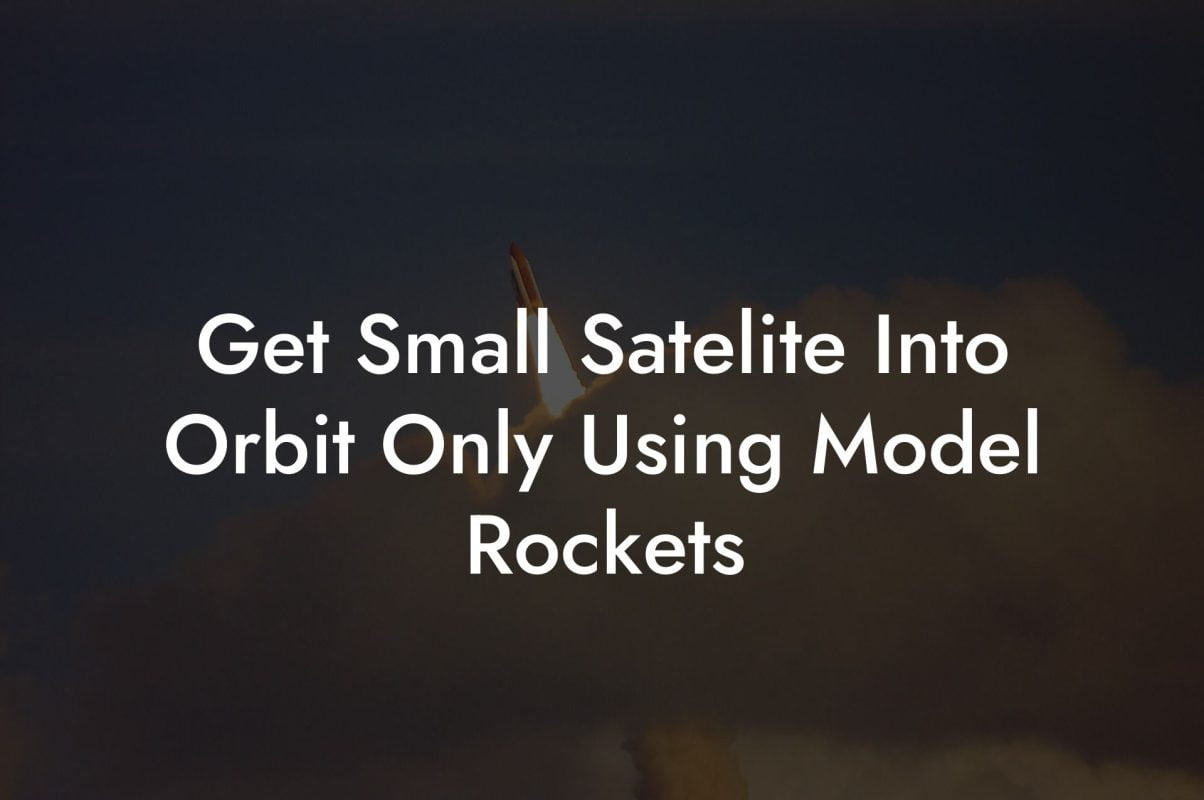Witness the launch of an Estes model rocket as it races towards the sky with spectacular speed and excitement. At the heart of every awe-inspiring launch lies a crucial component - the Estes model rocket igniter. Discover the essential role igniters play in model rocketry and how to use them effectively in this comprehensive guide.
Estes Model Rockets Igniters Table of Contents
Understanding Estes Model Rocket Igniters
Understanding Estes Model Rocket Igniters
Operating as a small heat-conducting wire, the Estes model rocket igniter is tasked with igniting the rocket's engine. The igniter is submerged into the engine, where it heats up and sets off the black powder propellant. To initiate the launch sequence, an electrical current passes from a launch controller through the igniter.
Anatomy of an Estes Igniter
- Pyrogen tip: The pyrogen tip is the igniter's most crucial part. This inflammable substance takes the launch controller's electrical current and heats up rapidly.
- Bridge wire: A thin metal wire connects the igniter's leads and runs through the pyrogen tip. When the electrical current heats the bridge wire, the pyrogen tip ignites and starts the engine.
- Insulation: An insulating material surrounding the bridge wire and pyrogen tip ensures that the igniter's heat only moves towards the engine and propellant, maintaining safety during the ignition process.
How to Use Estes Model Rocket Igniters
Before launching your rocket, it's essential to properly install the igniter into the engine and set up your launch system. Follow these steps for a successful ignition:
Step 1: Prepare Your Rocket Engine
Insert the engine into the rocket's engine mount, ensuring it's secure and correctly positioned.
Step 2: Insert the Igniter
- Gently insert the igniter's pyrogen tip into the nozzle hole of the engine until it's touching the propellant.
- Use the plastic plug provided with the engine or an igniter holder to keep the igniter in place during the launch preparation.
Step 3: Connect the Igniter Leads
At a safe distance from the launch pad, connect the igniter leads to the launch controller using the designated alligator clips. Ensure that the launch controller switch is in the "off" position prior to connecting leads.
Step 4: Launch Your Rocket
Once you've secured the launch area, activate the countdown and switch the launch controller to the "on" position to initiate the electric current and ignite the engine.
Maintenance and Safety Tips
- Never attempt to modify the igniter or use a homemade version. This can result in dangerous accidents and engine failures.
- Store igniters away from heat sources, open flames, and direct sunlight, as they are sensitive to heat and could inadvertently ignite.
- Dispose of used igniters responsibly to prevent any hazard from residual pyrogen.
Estes Model Rockets Igniters Example:
Launching an Estes Alpha III Model Rocket
The Estes Alpha III model rocket is an excellent choice for beginners in model rocketry. In this example, we'll use a standard Estes igniter and an A8-3 engine. Once the rocket is assembled, follow the igniter instructions above, and press the launch controller button to see the rocket soar into the sky.
Prepare for take-off with a new understanding of the Estes model rocket igniter and its crucial role in igniting the excitement of model rocketry. Share your newfound knowledge with fellow rocket enthusiasts, and ignite a shared passion for this thrilling hobby. Check out other guides and resources on Austin Rockets and take your rocketry skills to new heights.













